Guangzhou, China, November 5, 2025 - Today, the 2025 XPENG AI Day with the theme of "Emergence" was successfully held at XPENG Science Park in Guangzhou. At the event site, XPENG unveiled four important applications centered around "Physical AI", including XPENG VLA 2.0, XPENG Robotaxi, XPENG Next-Gen IRON, and two sets of flying systems from ARIDGE, outlining a clear picture of future mobility with Physical AI. Moreover, these four AI applications already have clear mass production plans, indicating that "Physical AI" is not a distant dream but a reality within everyone's reach.
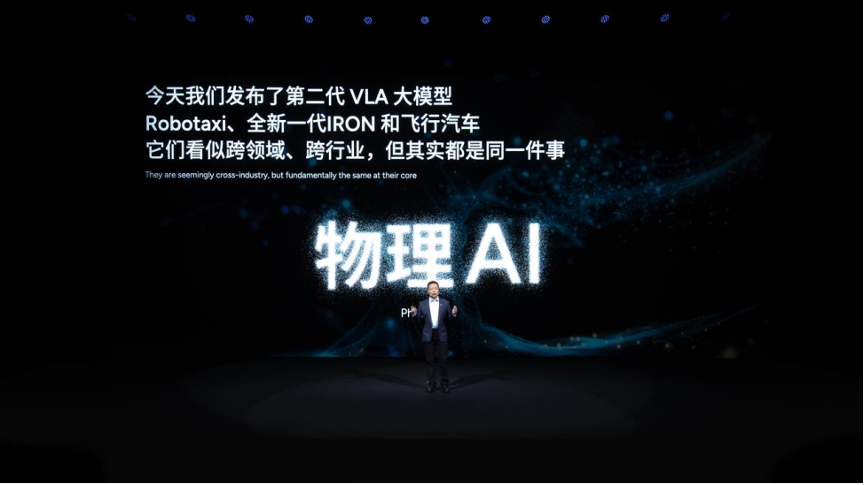
Meanwhile, He Xiaopeng, Chairman and CEO of XPENG, officially announced that XPENG's positioning has been upgraded to "a mobility explorer in the physical AI world and a global embodied intelligence company".

Newly positioned as a "global embodied intelligence company", the only one in China to achieve a full-stack self-developed physical AI system
The "2025 XPENG AI Day" is the seventh AI day hosted by XPENG, and it is also a crucial year for XPENG to transition from a "future mobility explorer" to a "mobility explorer in the physical AI world." Looking back on XPENG's more than a decade-long innovation journey and the exploration of the previous six AI days, our bold tech visions are coming to fruition.
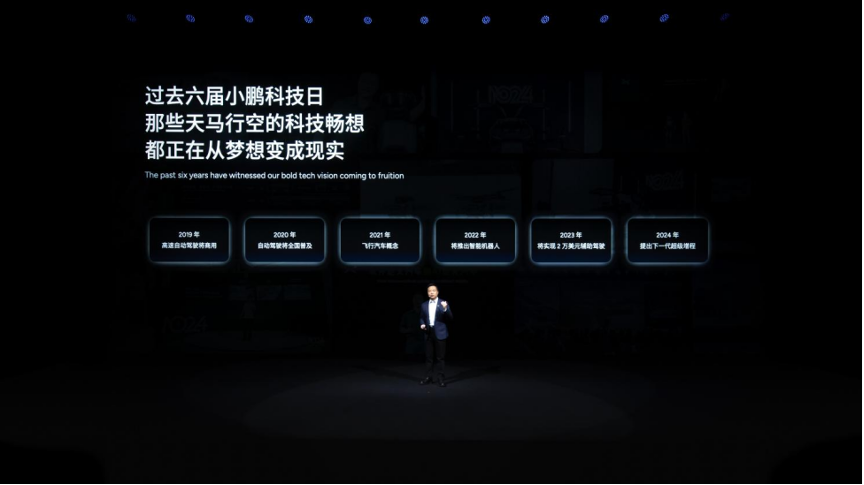
At the press conference, He Xiaopeng reviewed the previous technological waves in human history and shared his keen insights into them: the rise of the AI wave has sparked a brand-new revolution in the digital world. In the physical world, electricity has replaced oil as the primary fuel, and new energy is disrupting the century-old automotive industry. When digital and physical worlds integrate, it will give rise to "Physical AI".
The wave of Physical AI is about to arrive, and XPENG is already prepared to stand firm in the face of this wave. Based on nearly a decade of technological accumulation, XPENG has built a full-stack self-developed Physical AI system that covers multiple fields such as chips, operating systems (large models), and intelligent hardware. The construction of this system will provide a technological foundation for XPENG's implementation in embodied intelligent carriers such as AI cars, Robotaxis, humanoid robots, and flying cars.
Driven by technological innovation as its core impetus, XPENG will take root in the field of physical AI, continuously expand the boundaries of technology, and accelerate its transformation into a "global embodied intelligence company".
XPENG VLA 2.0 large model was grandly released, bringing a brand-new physical model paradigm
In He Xiaopeng's view, in the future, large models will become the "operating system of the physical AI world" and also the foundation for all physical AI applications. In the field of AI, the combination of "computing power + data + models" has been proven by the industry to enable AI to evolve and self-disrupt at an unimaginable speed.
At this AI Day, XPENG officially launched its VLA 2.0 large model, which adopts a brand-new "Vision-Implicit Token-Action" path, innovatively eliminating the "language translation" step, and for the first time achieving end-to-end direct generation from visual signals to action commands, completely subverting the industry's traditional "V-L-A" architecture, bringing a new physical model paradigm.

XPENG VLA 2.0, which is also XPENG's first mass-produced physical world large model, is both an action generative model and a physical world model for understanding and prediction.It can also perform self-evolving learning while understanding the interaction laws of the real world. This model can be cross-domain driven and applied to AI cars, humanoid robots, and flying cars simultaneously.
The combination of "computing power +
data" is also the core driving force behind the evolution of the
capabilities of cloud-based large models, enabling large models to have a
greater chance of generating powerful intelligent emergence capabilities. XPENG
has a globally leading cloud computing power cluster of 30,000-card, with the
cluster's operating efficiency consistently maintaining above 90% over the
years. Moreover, XPENG has already deployed a base model with 72 billion
ultra-large-scale parameters in the cloud, and this model can achieve a
full-cycle iteration once every five days.
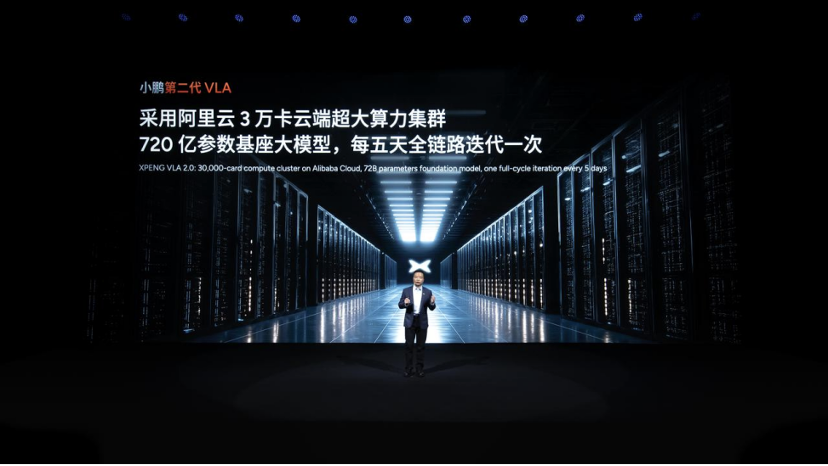
At the Model Training level, XPENG VLA 2.0 can directly utilize a vast amount of real driving videos for training without any Data Annotation. The data training volume for the VLA 2.0 is nearly 100 million clips, equal to the sum of extreme driving scenarios that a human driver would encounter in 65,000 years of driving . Based on an understanding of the physical world, XPENG VLA 2.0 can infer future decision-making scenarios and generate more realistic long-tail scenarios for adversarial training, thereby significantly enhancing its ability to handle long-tail problems.
Deploying XPENG VLA 2.0 to the vehicle end poses an extremely challenging test of the capabilities of software-hardware collaboration and engineering implementation. To achieve the mass production of the VLA 2.0 for vehicle installation, XPENG has redeveloped a targeted compiler and software stack for the Turing AI chip. Thanks to the full-cycle optimization of "chip - operator - model", XPENG has ultimately managed to install the VLA 2.0 with a parameter scale of billions on the Ultra version model with 2250 TOPS, while the parameter scale of models commonly used in the industry on vehicle ends is only in the tens of millions.

Based on the VLA 2.0, XPENG has released the "Narrow Road NGP" function, significantly enhancing intelligent driving performance in complex narrow roads and mixed-traffic environments, with the average takeover mileage (MPI) on complex narrow roads increasing by 13 times. Surprisingly, during the testing process, XPENG VLA 2.0 intelligence has demonstrated new capabilities, such as the ability to recognize hand gestures and proactively respond to traffic light changes, etc., and can handle these untrained complex road conditions with ease. In addition, XPENG has also been the first in the industry to launch the "Navigation-Free Automated Driving Assistance" Super LCC + Human-Machine Co-Driving, which can be activated globally without relying on navigation, and during roaming, simply turning the steering wheel slightly allows the vehicle to cooperate in completing lane changes and turns.
By the end of December 2025, XPENG will invite pioneer users to co-create and experience the VLA 2.0, and in Quarter 1 of 2026, it will fully roll out the VLA 2.0 to XPENG Ultra models.
"To accelerate the global application of physical AI and the co-construction of its ecosystem, XPENG VLA 2.0 large model will be open-sourced to global business partners." At the event site, He Xiaopeng announced that Volkswagen becomes the launch customer of XPENG VLA 2.0. Meanwhile, XPENG Turing AI Chip has secured the nomination from Volkswagen.
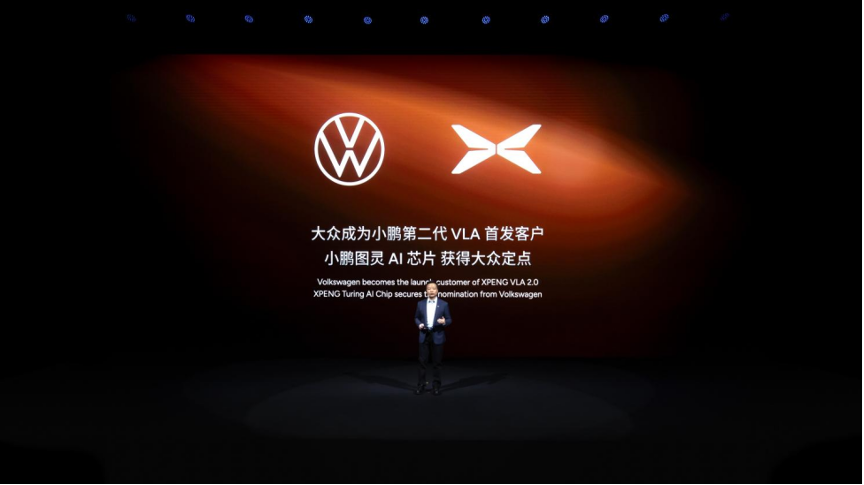
Building the Future Mobility Landscape of Physical AI: New Products in Three Key Areas - Robotaxi, Humanoid Robots, and Flying Cars - Launched Simultaneously
At this AI Day, XPENG presented a clear physical AI future mobility map to the outside world: three embodied intelligent products, namely Robotaxi, humanoid robots, and flying cars, will enter millions of households, expanding people's living radius while bringing more convenient and enjoyable technological experiences.
Currently, the Robotaxi industry has not yet entered the stage of large-scale popularization, and pain points such as high retrofit costs, small fleet size, limited operating scope, and numerous ride-hailing restrictions urgently need to be addressed. To this end, XPENG will launch three Robotaxi models in 2026 and will also initiate the trial operation of Robotaxi.
XPENG Robotaxi will be China's first full-stack self-developed and mass-produced Robotaxi. At the most core level of autonomous driving hardware and software, it is equipped with 4 Turing AI chips, with on-board computing power reaching up to 3000 TOPS, which is currently the highest global standard. In terms of technical approach, XPENG's Robotaxi does not rely on lidar and high-precision maps, and can handle different road types and traffic environments worldwide by relying on pure vision solution.
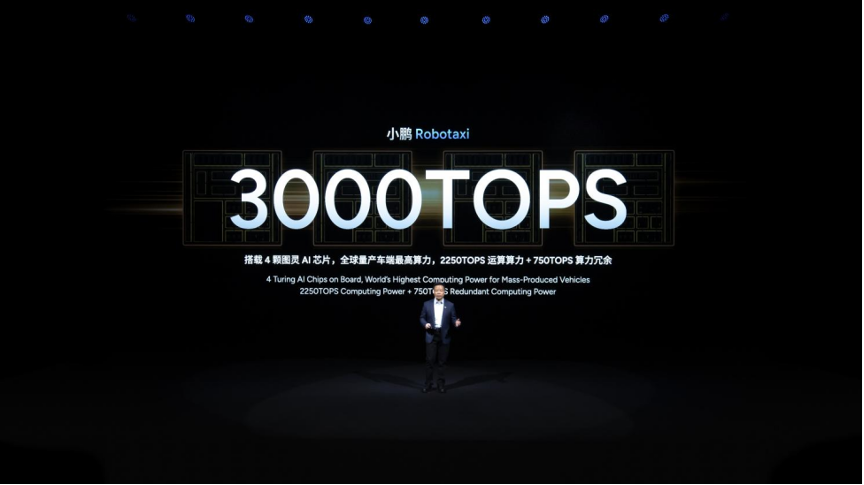
XPENG Robotaxi was designed from the very beginning to be driverless. Relying on the capabilities of XPENG VLA 2.0 + VLM, it can support ultra-low latency interaction with the autonomous driving system at the local end. Empowered by the VLA 2.0, XPENG Robotaxi supports generalization learning, enabling higher versatility and global rapid deployment efficiency. To ensure driving safety to the greatest extent, XPENG Robotaxi is pre-equipped with a dual-redundancy hardware architecture, where the two sets of hardware can serve as backups for each other, allowing for quick switching even in case of failure. Empowered by the VLM large model, XPENG Robotaxi has built a new in-vehicle and out-of-vehicle interaction system, such as the industry's first sun visor external display, which endows the vehicle with "communication and expression" capabilities, enabling visual prompts and interaction with pedestrians in scenarios such as low-speed driving and parking, enhancing the trust in human-vehicle interaction and improving safety. In the future, this system will cooperate with external vehicle voice to bring a multi-dimensional interactive experience that integrates vision and hearing.
Regarding the future development direction of autonomous driving, XPENG has also put forward a brand-new concept: one is the fully shared driver-absent vehicle (Robotaxi), and the other is the privately-owned driver-present L4 models. Based on this concept, XPENG will simultaneously launch a new intelligent driving TRIM, "Robo", in 2026, which shares the same origin as Robotaxi, has the same hardware configuration, Safety Redundancy, and intelligent driving capabilities, and is equipped with two intelligent driving models to meet users' diverse needs.
To enable more users to experience an advanced level of mobility, XPENG Robotaxi will open its SDK and jointly build the Robotaxi ecosystem with global partners. He Xiaopeng announced: "Amap will become XPENG Robotaxi's first global ecosystem partner, and in the future, the two parties will jointly provide Robotaxi services globally."
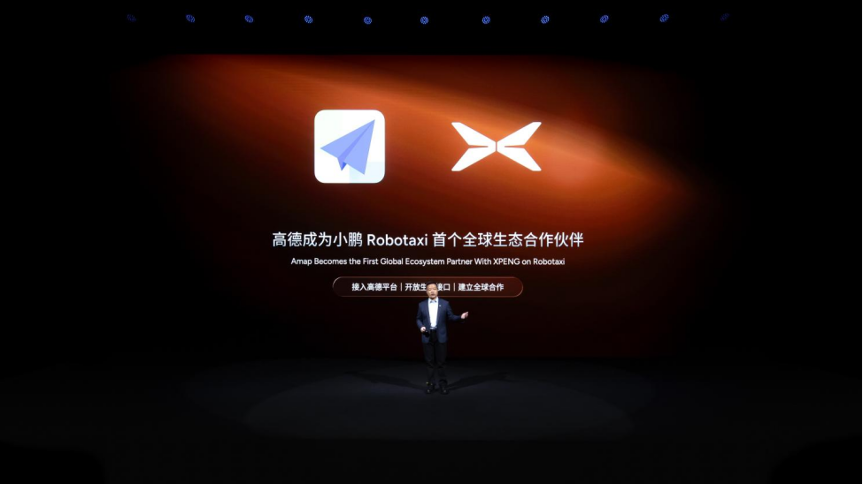
While AI is unleashing a wave of transformation in the digital world, it is also laying the groundwork for creativity in the physical world. Over the past five years, both the "form" and "intelligence" of robots have been evolving at an unimaginable pace, as evidenced by the R&D journey and the release of multiple generations of product forms by XPENG Robotics Team. In 2024, XPENG released its first-generation IRON, whose "human-like" feel left a deep impression on the outside world.
"Whether robots should be human-like" is a topic that has attracted a lot of attention in the industry. XPENG's answer is to "extreme anthropomorphism". Because when humanoid robots achieve "extreme anthropomorphism", how to achieve several major problems that are easier to commercialize, easier to generalize, and easier to obtain training data can be solved.
At the press conference, XPENG Next-Gen IRON made a stunning debut with its highly human-like appearance and catwalk-like graceful gait. Different from the design concepts of most humanoid robots, XPENG Next-Gen IRON's design concept is "born from within". It has a humanoid spine, bionic muscles, and fully covered flexible skin, and supports customization for different body shapes. With 82 degrees of freedom throughout the body, its movements are natural, smooth, and flexible, capable of achieving, catwalk walking and other high-difficulty human-like actions; it uses the industry's smallest "harmonic joint" to achieve 1:1 hand size, and the hand has 22 degrees of freedom. Meanwhile, the XPENG Next-Gen IRON also pioneered the application of all-solid-state batteries in the industry, achieving ultimate lightweight, ultra-high energy density, and ultimate safety.
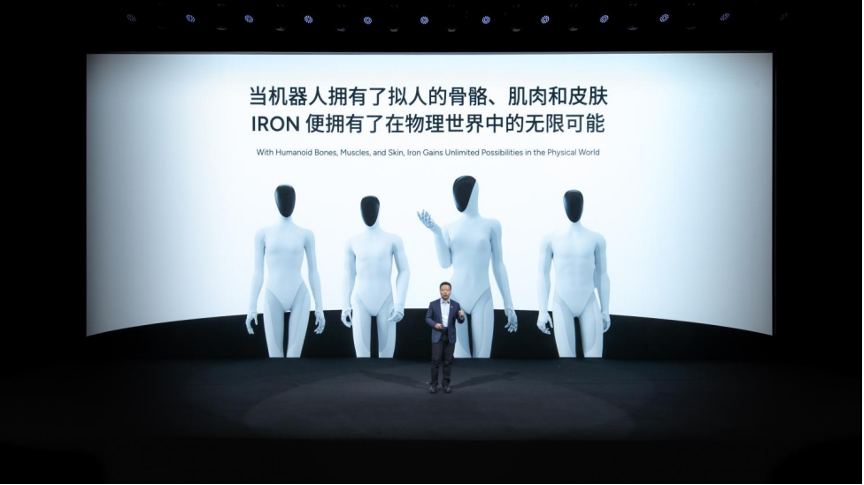
Compared with the first-generation IRON, the Next-Gen IRON has achieved comprehensive upgrades in bionic structure, intelligence system, and energy architecture, and has achieved "ultra-realistic anthropomorphism" in both appearance and thinking interaction. The XPENG Next-Gen IRON is equipped with 3 Turing AI chips, with an effective computing power of 3000 TOPS, and at the same time, it is the first to be equipped with XPENG's first-generation physical world large model. By constructing a high-order combination of capabilities of the "VLT + VLA + VLM", it realizes the three high-order intelligences of "conversation, walking, and interaction". It is worth noting that XPENG's "VLT large model" is a brand-new large model specifically developed for robots , regarded as the core engine for robots' autonomous actions, enabling them to achieve in-depth thinking and autonomous decision-making.
In addition, in terms of security, XPENG Next-Gen IRON robot, on the basis of adhering to the "Three Laws of Robotics", has extended the Fourth Law of "Privacy data does not leave the robot" to maximize the protection of the safety of participants in the physical AI world.
Currently, the development of humanoid robots faces several major challenges. One is "lack of training data," for which XPENG has established its first embodied intelligence data factory in Guangzhou. The second is "how to achieve large-scale mass production," as the humanoid robot field has not yet formed a mature software and hardware supply chain, and it is a "software-driven hardware" design, requiring extremely high capabilities in self-research and cross-integration. Relying on XPENG's "Physical AI Full Stack Self-Research System," XPENG's humanoid robot, with the advantage of sharing the same technology origin as AI cars, is expected to be the first to achieve large-scale mass production. He Xiaopeng said, "By the end of 2026, XPENG aims to achieve large-scale mass production of high-level humanoid robots."
At the monetization plan level, XPENG Next-Gen IRON will prioritize entering commercial scenarios to provide services such as guided tours, shopping guides, and traffic diversion. Baosteel Stock will become an ecosystem partner of XPENG's robot IRON. Zou Jixin, Chairman of Baoshan Iron & Steel Co., Ltd., stated: "XPENG IRON will be stationed at Baosteel to explore application scenarios and iterate and evolve in complex industrial fields such as inspection, empowering Baosteel intelligent manufacturing.
He Xiaopeng said: "To accelerate the application and implementation of humanoid robots, XPENG IRON will open its SDK and jointly build a humanoid robot application ecosystem with global developers. "
Following new energy vehicles,low-altitude economy is expected to become another trillion-level emerging industry in China. In the "airspace" extension of embodied intelligence, XPENG ARIDGE is building two flight systems for low-altitude travel, namely the "Land Aircraft Carrier" for individual short-haul flights experience and the full tiltrotor hybrid flying car "A868" for multi-passenger long-haul travel, thus inaugurating a new era of three-dimensional low-altitude travel.
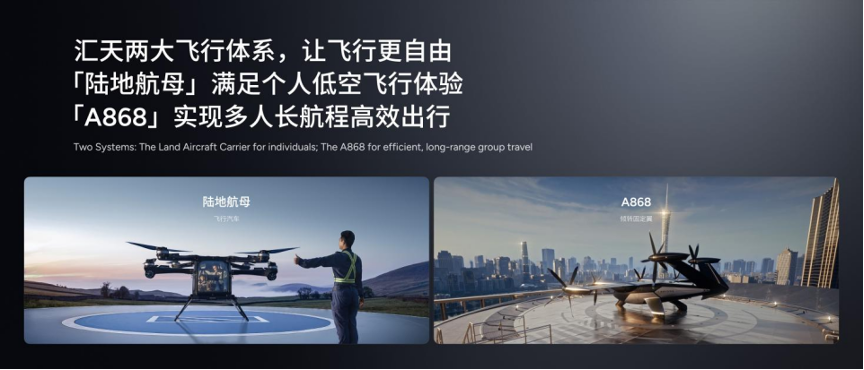
The "A868", which made its official public debut on this AI Day, adopts a full tilt-rotor configuration. Based on XPENG's Kunpeng Super Extended-Range Architecture, it uses a self-developed aviation-grade hybrid-electric core to provide continuous and sufficient energy supply, and is expected to achieve a long range of 500 km, with a maximum cruising speed expected to reach 360 km/h, and its 6-seater cabin design precisely meets the needs of business travel. Currently, the "A868" has officially entered the critical stage of flight verification.
Another product of ARIDGE, the "Land Aircraft Carrier", has officially entered the eve of mass production, with global orders currently exceeding 7,000 units, setting a new industry record. Notably, the "Land Aircraft Carrier" disrupts the traditional operating logic of aircraft, being the first in the industry to introduce an intelligent air cockpit and the world's first "four-axis integrated" single-stick control system, enabling even novices to easily master it through training. In terms of safety, it adopts a full-domain Safety Redundancy design, covering key systems such as power propulsion, power energy, high and low voltage power supply, flight control navigation, flight operation, and bus communication, and innovatively uses a six-axis, six-propeller dual-ducted configuration, ensuring safe flight and landing in case of two diagonal rotors failure.
In terms of mass production, ARIDGE Flying Car's mass production plant started trial production on November 3 and successfully rolled off the first Land Aircraft Carrier aircraft. As the world's first plant to adopt a modern assembly line for the mass production of flying cars, it has achieved in-depth integration of aviation-grade quality standards and automotive-grade efficiency. The planned annual production capacity is 10,000 units, with an initial annual production capacity of 5,000 units. When operating at full capacity, one aircraft can roll off the production line every 30 minutes. This will accelerate the large-scale mass production of the Land Aircraft Carrier by 2026.
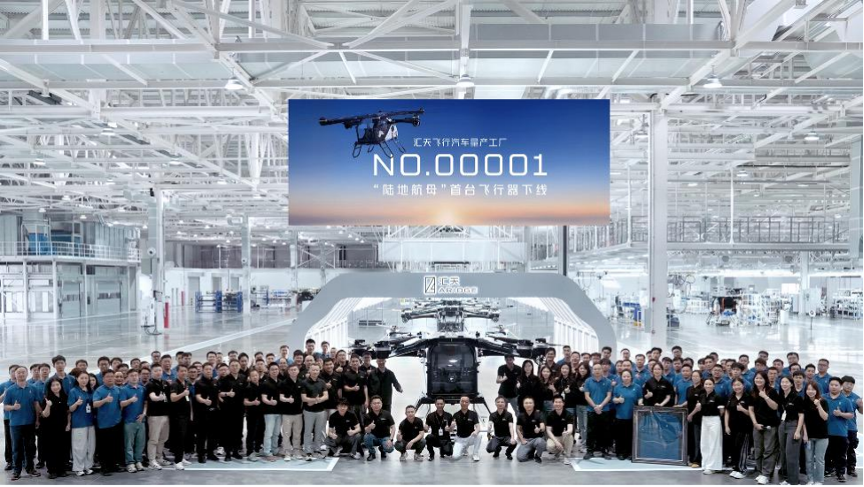
As flying cars gradually move towards commercial application, low-altitude travel scenarios are constantly expanding, and more people will personally experience this brand-new mode of travel. To accelerate the implementation of this trend, ARIDGE will join hands with the Dunhuang Municipal Government to launch the first low-altitude self-driving tourism route in Northwest China in 2026, creating a three-dimensional "self-driving flight" travel experience and promoting the application of flying cars in the cultural and tourism sector.
Since its establishment over a decade ago, XPENG has always remained steadfast in its original aspiration of "technology changing the world." The new headquarters, a new starting point, XPENG Science Park has gathered over 10,000 "XPENGers" spanning multiple fields including AI, automotive, robotics, and flying cars. Interdisciplinary, cross-field, and cross-industry technological innovation happen every day. New ideas, technologies, and applications interact and inspire each other, giving rise to XPENG's own "emergence." The glimmer of emergence reaches for the stars, and the future of physical AI begins from this moment.
About XPENG
Founded in 2014, XPENG is a leading Chinese born AI-driven mobility company
that designs, develops, manufactures, and markets Smart EVs, catering to a
growing base of tech-savvy consumers. With the rapid advancement of AI, XPENG
aspires to become a global leader in AI mobility, with a mission to drive the
Smart EV revolution through cutting-edge technology, shaping the future of
mobility. To enhance the customer experience, XPENG develops its full-stack
advanced driver-assistance system (ADAS) technology and intelligent in-car operating
system in-house, along with core vehicle systems such as the powertrain and
electrical/electronic architecture (EEA). Headquartered in Guangzhou, China,
XPENG also operates key offices in Beijing, Shanghai, Silicon Valley, and
Amsterdam. Its Smart EVs are primarily manufactured at its facilities in
Zhaoqing and Guangzhou, Guangdong province.
XPENG is listed at the New York Stock Exchange (NYSE: XPEV) and Hong Kong Exchange (HKEX: 9868).
For more information, please visit https://www.xpeng.com/.
Contacts:
For Media Enquiries: XPENG PR Department
Email: pr@xiaopeng.com
Source: XPENG Motors
